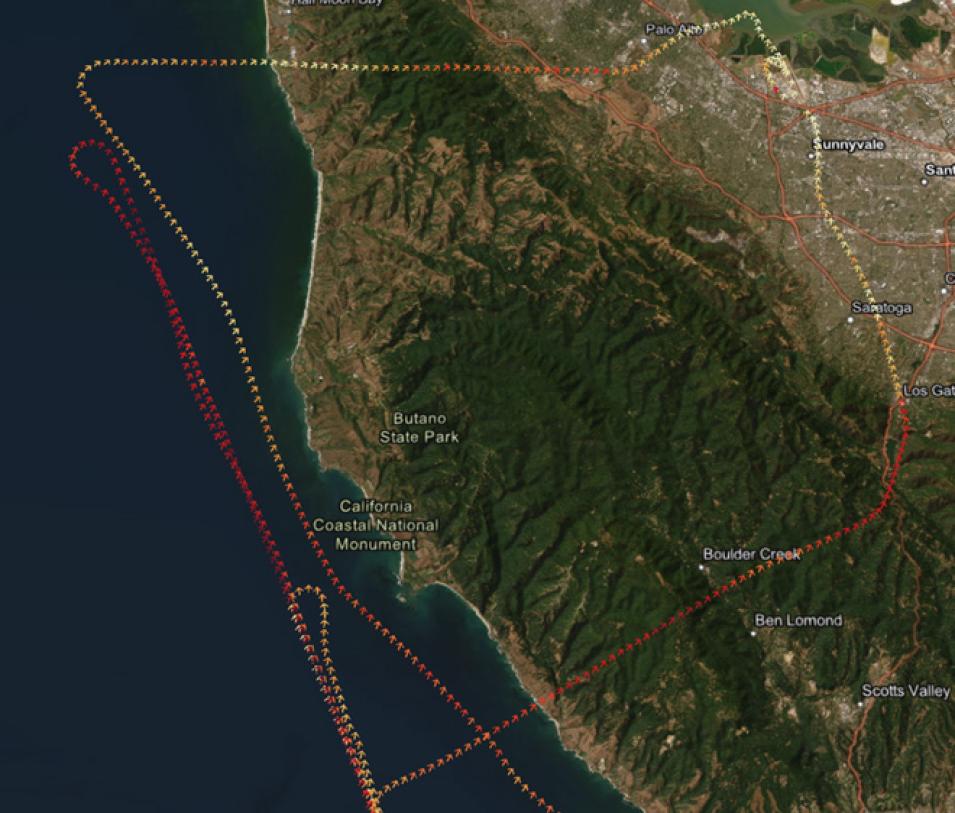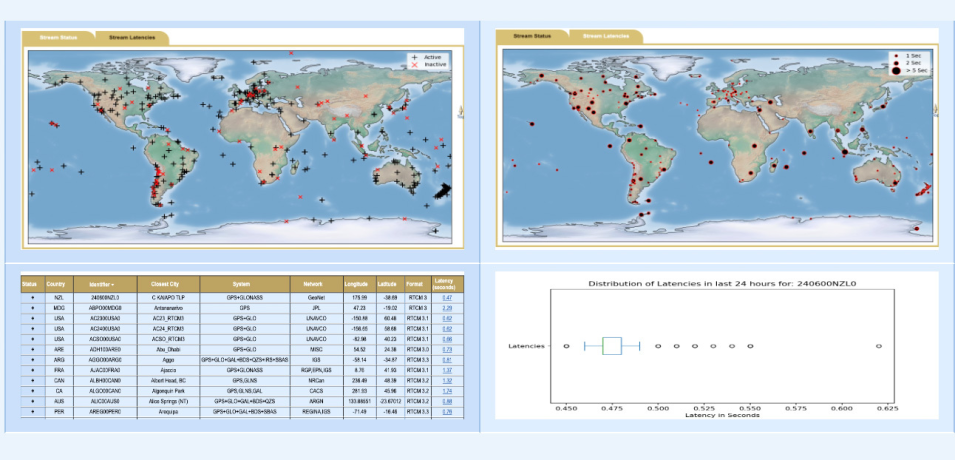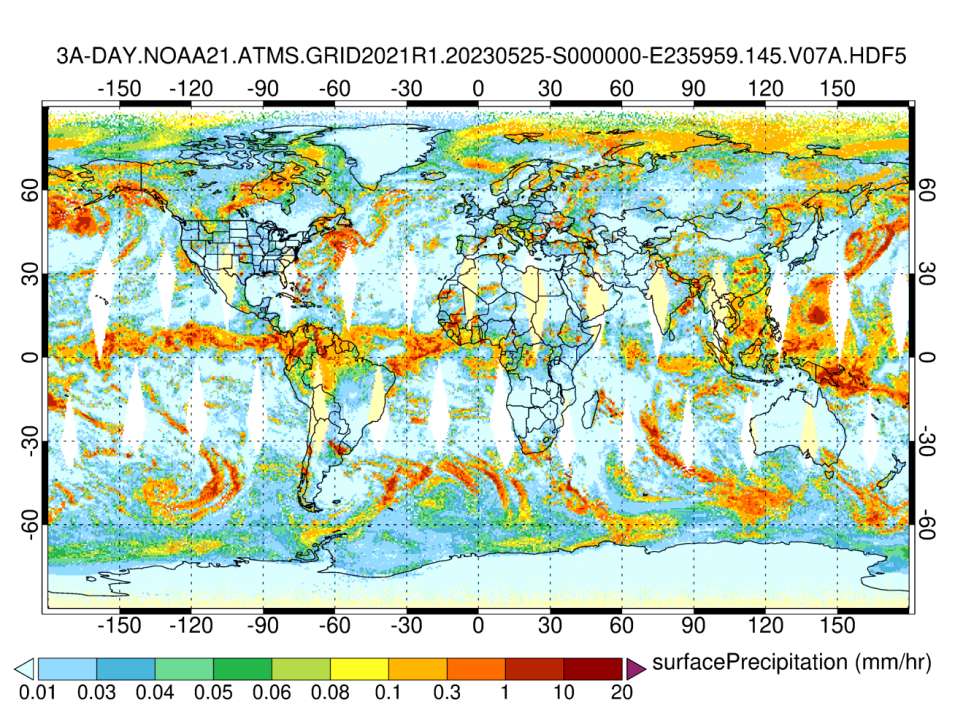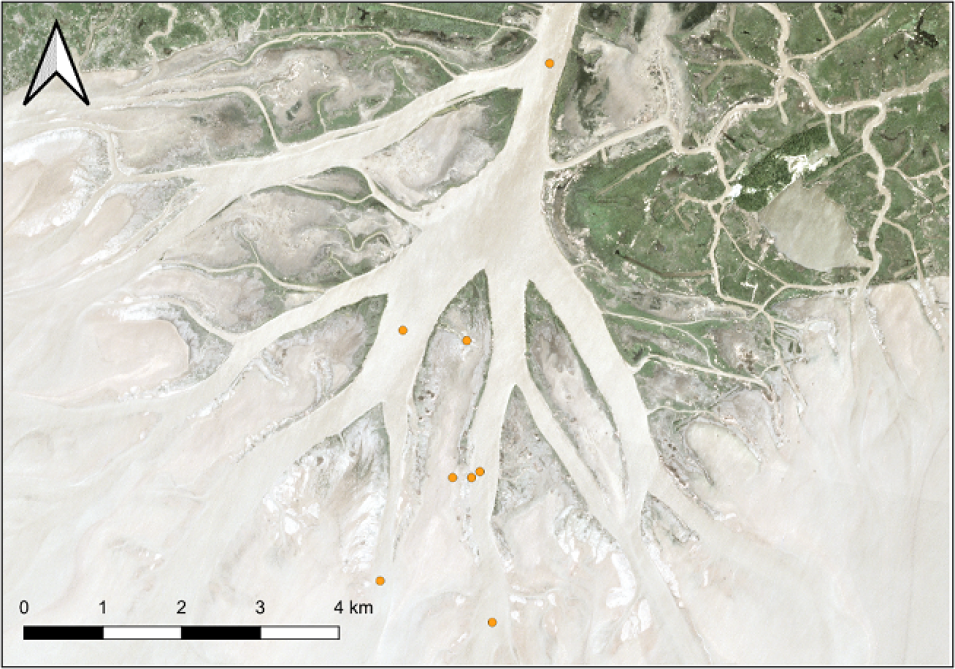The High Mountain Asia Landslide Catalog, Version 2 dataset is now available. The catalog is an inventory of approximately 2,800 landslides that occurred in the High Mountain Asia study area between January 5, 2007, and December 31, 2018, as well as one event from January 28, 1990. The catalog lists the dates and locations of the landslides along with additional characteristics, such as event triggers, country, landslide length and area, and the number of injuries and fatalities.
Access the Landslide Catalog and more information
The MEaSUREs Greenland Image Mosaics from Sentinel-1A and -1B Version 4 dataset has been updated. This dataset is part of NASA's Making Earth System Data Records for Use in Research Environments (MEaSUREs) program, and its temporal coverage now spans from January 1, 2015, to March 25, 2023. It consists of 6-day and 12-day, 50-meter resolution image mosaics of the Greenland coastline and ice sheet periphery. The mosaics are derived from C-band Synthetic Aperture Radar (SAR) data acquired by the ESA (European Space Agency) Copernicus Sentinel-1A and -1B satellites.
Access Greenland Image Mosaics and more information
The Massachusetts Lidar Derived Digital Elevation Model, Version 1 and Millbrook Lidar Derived Digital Elevation Model, Version 1 datasets from NASA's Soil Moisture Active Passive (SMAP) Validation Experiment 2019 to 2022 (SMAPVEX19-22) campaign are now available. These digital elevation model data consist of ground surface elevations derived from lidar measurements collected in April and August 2022 in the vicinity of Millbrook, New York, and Petersham, Massachusetts, during the SMAPVEX19-22 campaign. These locations were chosen due to their forested land cover, as the aim of SMAPVEX19-22 was to improve soil moisture and vegetation opacity retrieval in forests and to provide additional reference for SMAP/Sentinel-1 product validation.
SMAPVEX19-22 data access and more information
The SnowEx20 Grand Mesa Intensive Operation Period Computed Tomography Snow Microstructure, Version 1 dataset is now available. This dataset characterizes snow microstructure of six snow pits from the SnowEx 2020 Grand Mesa, Colorado, Intensive Observation Period using microcomputed tomography. These data were collected from February 3, 2020, to February 8, 2020.
SnowEx20 data access and more information
The Ice, Cloud and land Elevation Satellite-2 (ICESat-2) Calibration/Validation Land, Vegetation, and Ice Sensor (LVIS) Level 1B Georeferenced Imagery, Version 1 dataset is now available. This dataset contains georeferenced imagery from the LVIS PhaseOne medium-format camera, which operated on high-altitude segments of flights during the ICESat-2 2022 Arctic Summer calibration campaign. Images were captured over the Arctic Ocean, Northern Canadian Archipelago, and Northern Greenland from July 11 to July 26, 2022.
LVIS L1B Georeferenced Imagery. Version 1 data access and more information
The Land Cover Classification, Snow Cover, and Fractional Snow-Covered Area Maps from Maxar WorldView Satellite Images, Version 1 dataset is now available. This dataset includes fine-scale snow and land cover maps from two mountainous study sites in the Western United States, binary snow maps derived from the land cover maps, and 30-meter and 465-meter fractional snow-covered area (fSCA) maps. Also included are Landsat and Moderate Resolution Imaging Spectroradiometer (MODIS) fSCA map products. Temporal coverage spans from May 20, 2015, to May 5, 2019.
Maxar WorldView satellite images data access and more information
Oak Ridge National Laboratory Distributed Active Archive Center (ORNL DAAC)








